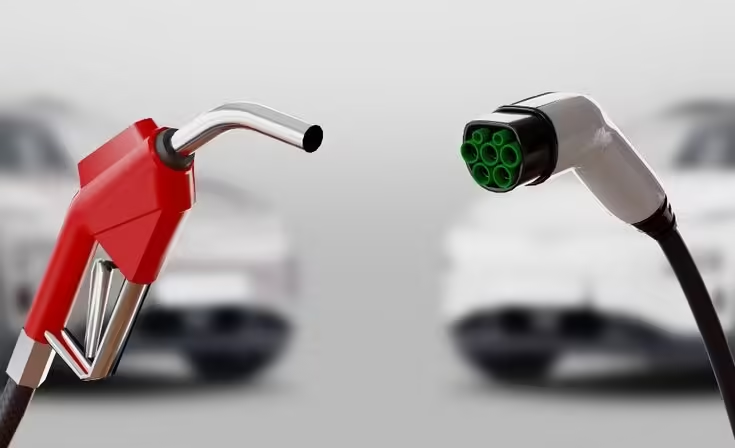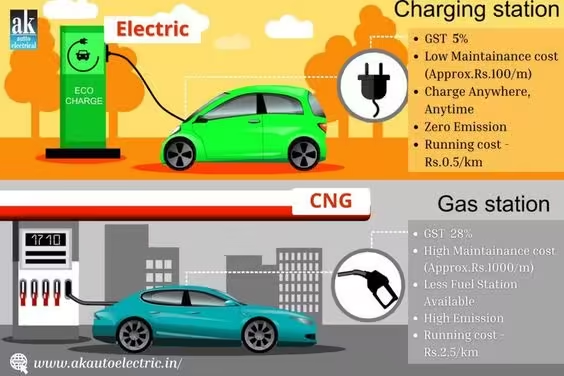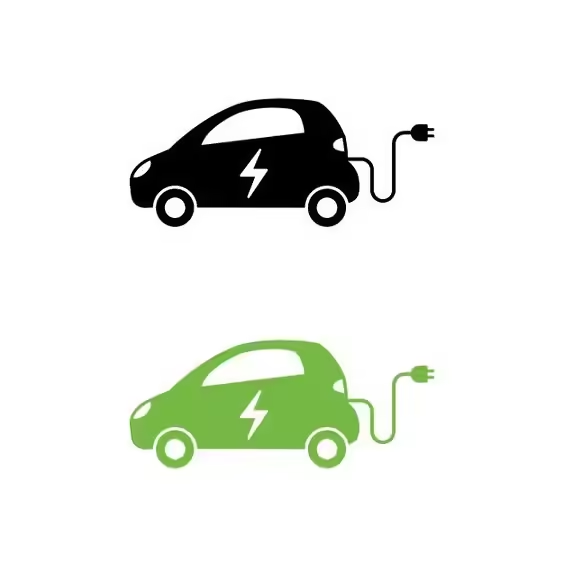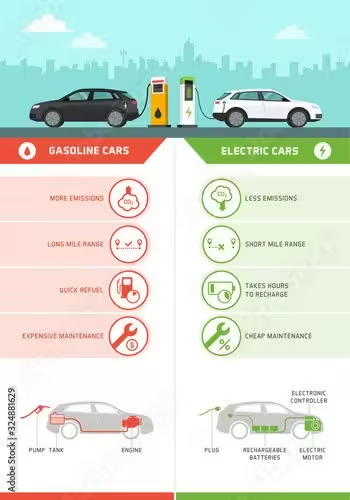
The automotive landscape is undergoing a radical transformation, with electric vehicles (EVs) increasingly becoming a popular choice among consumers. While the upfront cost of EVs has traditionally been higher than that of internal combustion engine (ICE) vehicles, a deeper cost analysis reveals that EVs are now more economically viable over their lifetime. In this blog post, we’ll break down the various costs associated with EVs and ICE cars, highlighting why EVs offer significant financial advantages in the long run.

Upfront Costs: The Price Tag That Deceives
When comparing EVs and ICE cars, the initial purchase price often gives ICE vehicles the upper hand. However, this comparison can be misleading, as it does not account for the incentives, rebates, and long-term savings associated with EV ownership.
1. Purchase Price: EVs generally have a higher upfront cost due to expensive battery technology. However, the price gap is narrowing rapidly as battery costs decrease and economies of scale improve. In addition, many governments offer substantial incentives for EV buyers, such as tax credits, rebates, and exemptions from certain fees. For example, in the United States, buyers can receive up to $7,500 in federal tax credits, significantly lowering the effective cost of an EV.
2. Incentives and Rebates: Governments around the world are incentivizing the adoption of EVs through various schemes. Beyond tax credits, there are discounts on registration fees, exemptions from congestion charges, and even free access to high-occupancy vehicle (HOV) lanes. These incentives not only reduce the upfront cost but also provide ongoing benefits that ICE cars simply do not offer.

Fuel Costs: Electricity vs. Gasoline
Fuel costs are one of the most significant expenses of vehicle ownership, and this is where EVs truly shine. The cost of electricity is substantially lower than gasoline or diesel, providing EV owners with immediate and significant savings.
1. Lower Fuel Costs: On average, charging an EV costs significantly less per mile than refueling an ICE vehicle. According to the U.S. Department of Energy, the cost of electricity is about half to one-third of the cost of gasoline on a per-mile basis. For instance, driving an EV like the Tesla Model 3 costs about $0.04 per mile, whereas a comparable ICE vehicle like the BMW 3 Series costs around $0.14 per mile on gasoline. Over time, these savings add up to thousands of dollars.
2. Home Charging Benefits: EV owners have the convenience of charging their vehicles at home, often during off-peak hours when electricity rates are lower. This not only adds convenience but also allows for further cost reductions compared to the fluctuating and often higher prices at gas stations.
3. Public Charging Networks: Many public charging networks offer competitive pricing, and some even provide free charging options at select locations, such as shopping malls or workplaces. Moreover, businesses and governments are expanding the availability of fast chargers, making EVs increasingly practical for long-distance travel without breaking the bank.
Maintenance Costs: The Hidden Savings of EVs
Maintenance is another area where EVs hold a distinct advantage over ICE cars. Traditional vehicles have complex engines with hundreds of moving parts that require regular maintenance, including oil changes, transmission repairs, and exhaust system upkeep. EVs, in contrast, have far fewer moving parts, resulting in lower maintenance costs and less frequent repairs.
1. Fewer Moving Parts: EVs eliminate the need for oil changes, transmission repairs, and exhaust system maintenance because they do not have these components. This simplicity translates to fewer trips to the mechanic and lower overall maintenance costs.
2. Brake Wear Reduction: EVs utilize regenerative braking systems, which capture energy during braking and use it to recharge the battery. This system not only extends the range of the vehicle but also significantly reduces brake wear, leading to fewer brake replacements over the vehicle’s lifespan.
3. Longer Lifespan of Components: EV components, such as electric motors and battery systems, are designed for durability. Advances in battery technology have increased the lifespan of EV batteries, often outlasting the typical ownership period of the vehicle. Many manufacturers offer warranties of up to eight years or 100,000 miles for their batteries, providing peace of mind and reducing long-term costs.

Resale Value: EVs Are Catching Up
Historically, the resale value of EVs has been a concern, driven by fears of battery degradation and limited market demand. However, as battery technology improves and consumer confidence grows, the resale value of EVs is rising steadily.
1. Improving Resale Values: As more people recognize the cost advantages and environmental benefits of EVs, demand in the second-hand market is increasing. High-profile models from reputable brands, such as Tesla, tend to retain their value well, and other manufacturers are catching up quickly.
2. Battery Health Guarantees: Many EV manufacturers offer battery health guarantees, ensuring that used EVs maintain a significant portion of their range over time. This assurance helps boost resale value and makes EVs an attractive option for second-hand buyers.
Total Cost of Ownership: EVs Come Out on Top
When evaluating the total cost of ownership (TCO), which includes purchase price, fuel, maintenance, insurance, and depreciation, EVs are often more cost-effective than ICE vehicles. A study by Consumer Reports found that EV owners can save up to $6,000–$10,000 over the vehicle’s lifetime compared to ICE car owners.
1. Long-Term Savings: Even if an EV’s upfront cost is higher, the reduced expenses in fuel, maintenance, and other associated costs make it cheaper over time. These savings are especially pronounced for drivers who put significant miles on their vehicles each year, as the lower per-mile cost of electricity adds up quickly.
2. Insurance Rates: While insurance premiums for EVs can be slightly higher due to the cost of repairs, particularly for advanced electronics, these rates are becoming more competitive as insurers gain more data on EV performance and safety. Additionally, many insurers offer discounts specifically for EV owners due to their lower risk profiles.
3. Depreciation Trends: The depreciation rates of EVs are also stabilizing as the market grows. More buyers are interested in used EVs, and manufacturers are improving battery warranties and performance, helping maintain vehicle value.
Environmental and Social Benefits: Beyond the Wallet
The financial savings of EVs are compelling, but their environmental and social benefits add an even greater value proposition. EVs produce zero tailpipe emissions, helping reduce air pollution and combat climate change. This cleaner footprint not only supports global sustainability goals but also contributes to better public health by reducing harmful pollutants in urban areas.

Conclusion
While ICE cars may still appear more affordable upfront, the true cost of ownership tells a different story. From lower fuel and maintenance expenses to rising resale values and government incentives, EVs offer a more cost-effective and sustainable alternative. As battery technology continues to advance, the cost benefits of EVs will only grow, making them an increasingly attractive choice for consumers.
For those looking to make a smart financial decision that also aligns with environmental values, the answer is clear: the future belongs to electric vehicles. By investing in an EV today, drivers can enjoy significant savings while contributing to a cleaner, more sustainable world.

Leave a Reply